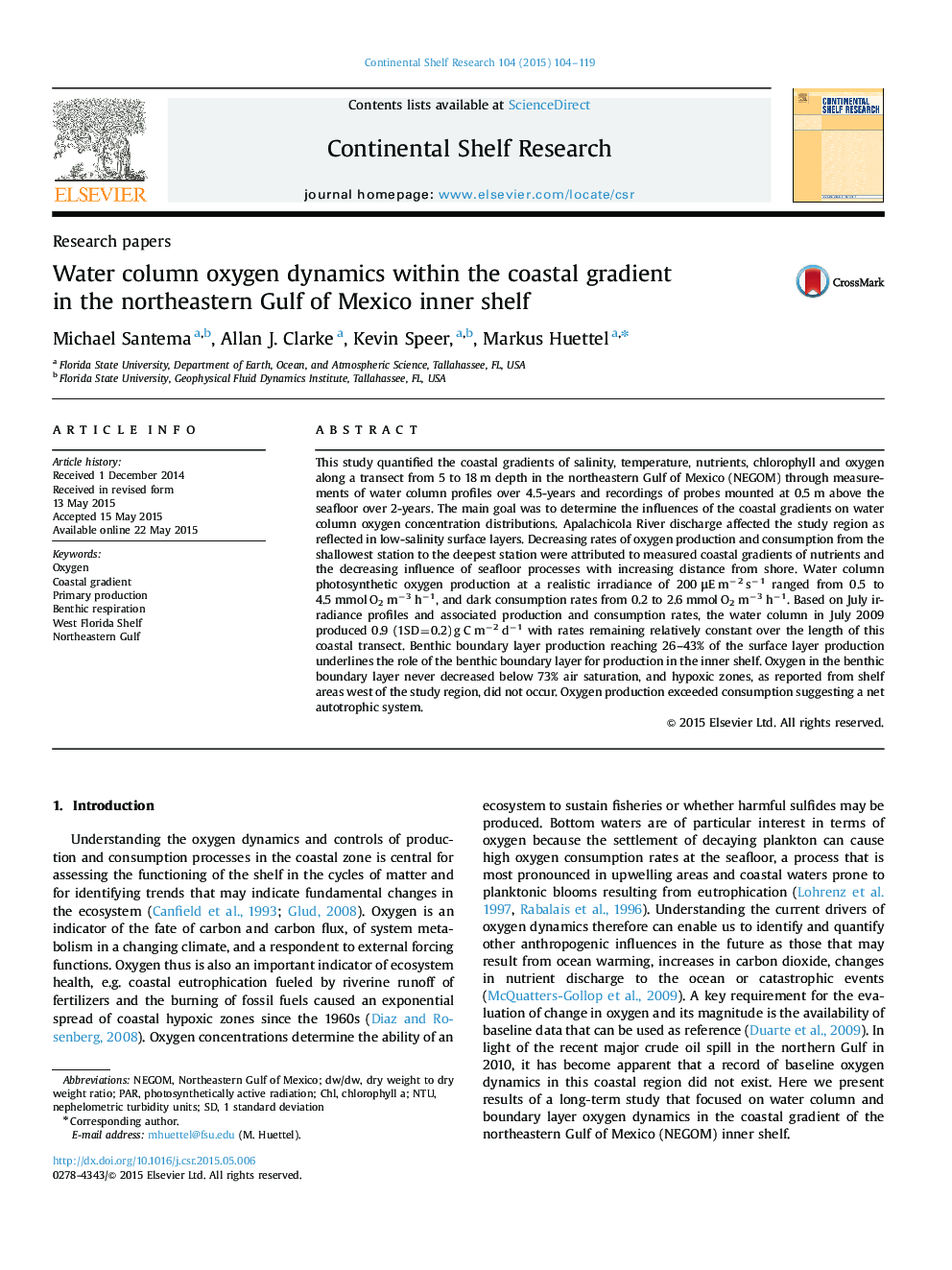| Article ID | Journal | Published Year | Pages | File Type |
|---|---|---|---|---|
| 4531692 | Continental Shelf Research | 2015 | 16 Pages |
•Long-term study on coastal gradients and oxygen in the northeastern Gulf of Mexico.•Increasing O2 production and decreasing O2 consumption rates toward the shore.•Water column oxygen and chlorophyll dynamics were closely linked.•Benthic boundary processes enhanced oxygen dynamics in the zone<8 m depth.•Oxygen production exceeded consumption suggesting an autotrophic system.
This study quantified the coastal gradients of salinity, temperature, nutrients, chlorophyll and oxygen along a transect from 5 to 18 m depth in the northeastern Gulf of Mexico (NEGOM) through measurements of water column profiles over 4.5-years and recordings of probes mounted at 0.5 m above the seafloor over 2-years. The main goal was to determine the influences of the coastal gradients on water column oxygen concentration distributions. Apalachicola River discharge affected the study region as reflected in low-salinity surface layers. Decreasing rates of oxygen production and consumption from the shallowest station to the deepest station were attributed to measured coastal gradients of nutrients and the decreasing influence of seafloor processes with increasing distance from shore. Water column photosynthetic oxygen production at a realistic irradiance of 200 μE m−2 s−1 ranged from 0.5 to 4.5 mmol O2 m−3 h−1, and dark consumption rates from 0.2 to 2.6 mmol O2 m−3 h−1. Based on July irradiance profiles and associated production and consumption rates, the water column in July 2009 produced 0.9 (1SD=0.2) g C m−2 d−1 with rates remaining relatively constant over the length of this coastal transect. Benthic boundary layer production reaching 26–43% of the surface layer production underlines the role of the benthic boundary layer for production in the inner shelf. Oxygen in the benthic boundary layer never decreased below 73% air saturation, and hypoxic zones, as reported from shelf areas west of the study region, did not occur. Oxygen production exceeded consumption suggesting a net autotrophic system.
Graphical abstractFigure optionsDownload full-size imageDownload as PowerPoint slide
